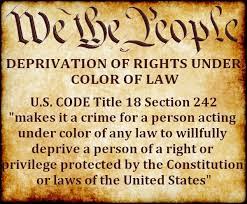Owens v. City of Independence. This landmark 1980 U.S. Supreme Court case sheds light on a pathway to accountability for government entities, helping families impacted by overreaching agencies find legal recourse.
The Supreme Court ruled in Owens’ favor, stating that municipalities are not shielded by “qualified immunity” when accused of constitutional violations. The Court reasoned that municipalities and government entities could not escape accountability when their actions directly violate citizens’ constitutional rights. This ruling is essential for individuals facing government overreach, as it established that local governments could be held liable for rights violations carried out by their officials.
How Owens Applies to Child Welfare Agencies
For families impacted by child welfare agencies that unjustly remove children from their homes, Owens v. City of Independence is relevant in several ways:
- Establishing Municipal Liability: Just as the City of Independence was held liable for violating Owens’ rights, child welfare agencies may similarly be held accountable for infringing on the constitutional rights of parents and children. By showing that the agency acted under color of law to unjustly deprive families of their rights, families may argue that the agency itself bears responsibility for these wrongful actions.
- Constitutional Rights to Family Integrity: Owens reinforced that municipalities could be sued for damages when constitutional rights are violated. Parents have a recognized constitutional right to raise their children without unjust interference by the state. When child welfare agencies remove children without sufficient evidence or due process, they are infringing on this fundamental right. The reasoning in Owens supports the notion that agencies and local governments must answer for such breaches of due process.
- Accountability Despite Qualified Immunity: While individual social workers and officials often claim qualified immunity, Owens held that municipalities themselves do not have this protection when sued under certain claims, such as those alleging constitutional violations. Therefore, parents may argue that even if individual caseworkers are immune, the agency itself is liable for systemic violations or policies that led to the wrongful removal of their children.
- Seeking Damages for Rights Violations: The Owens ruling allows individuals to pursue damages for the harm caused by constitutional violations. For affected families, this means that child welfare agencies could potentially be liable for the pain, suffering, and trauma caused by their overreach. When child welfare agencies act in bad faith, remove children without clear evidence, or deny families fair hearings, Owens supports the argument that these agencies can be held financially accountable.
Pathways to Justice for Families
Families affected by unjust actions of child welfare agencies often feel powerless, and the legal system can seem like an insurmountable barrier. However, cases like Owens v. City of Independence offer a framework for holding agencies accountable. Here are steps that families and advocates can consider when seeking justice:
- Documenting Due Process Violations: If a family was denied a fair hearing, or if child welfare decisions were made without clear evidence, these due process violations are essential to document. As in Owens, showing that rights were violated through lack of due process strengthens a claim against the agency.
- Filing Civil Rights Claims: With a clear basis in Owens, families may consider filing claims under Section 1983 of the Civil Rights Act, which allows individuals to sue for constitutional rights violations committed under color of law. This can apply to cases where child welfare agencies removed children without just cause, using false or misleading evidence, or blocking parents from presenting their side.
- Pursuing Municipal Liability: Rather than focusing solely on individual caseworkers who may be shielded by qualified immunity, families may bring suit against the agency as an entity, claiming that it bears responsibility for its practices, policies, or customs that led to the rights violations. This aligns with the Owens ruling, which opens the door for holding local government agencies accountable.
- Seeking Injunctive Relief: In cases where agencies continue to engage in unjust practices, families might also seek injunctive relief to prevent further rights violations. This could include court orders mandating changes to agency practices or requiring the agency to provide due process protections.




